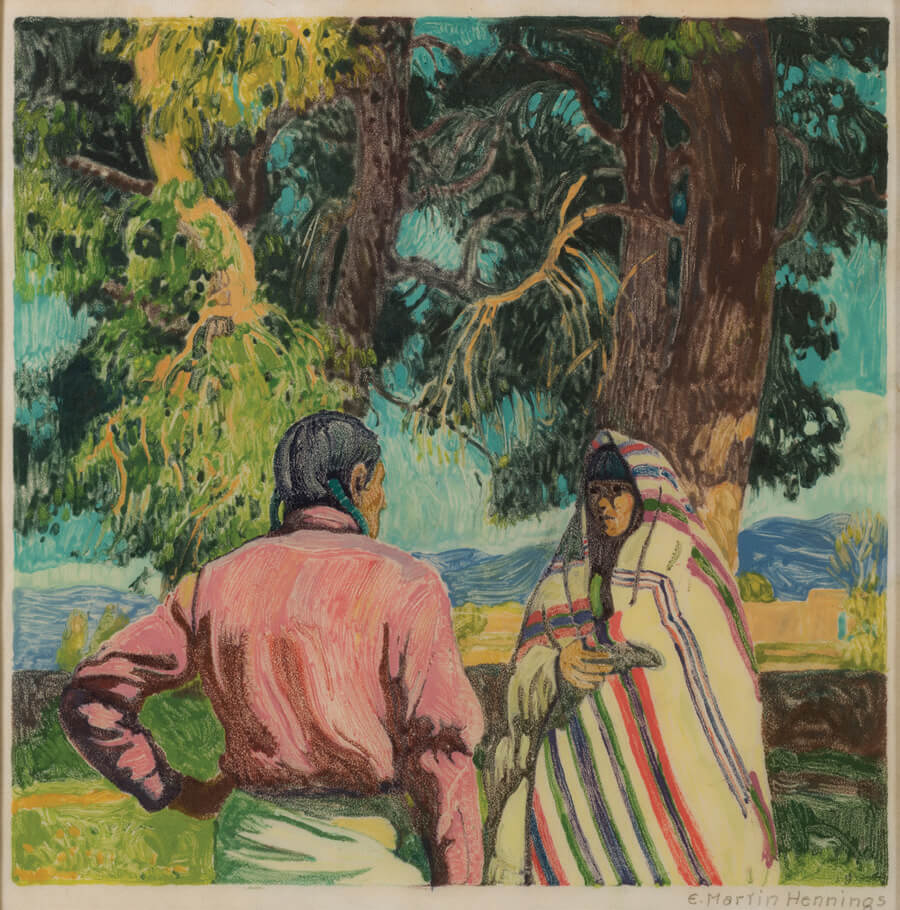
07 Nov Publisher’s Note: Monotypes by the Taos Masters
The members of the Taos Society of Artists built their reputations in oil paint. But, as well-rounded professionals, most with traditional academic training, they were also fluent in a variety of media. About half of the artists in the group explored printmaking, with E. Martin Hennings, Oscar E. Berninghaus, and Joseph Henry Sharp working extensively in monotypes.
In the most basic terms, the monotype is a handmade print in an edition size of one, with the unique image best characterized as a hybrid of painting and printmaking. Although the term was not coined until the late 1800s, the medium has been used in Europe since at least the mid-17th century.
Sharp kept a press in his Cincinnati studio and exhibited his monotypes in Denver, New York, and Boston. By 1902, when he began making Taos his regular summer destination, he had completed his work in the medium.
Hennings, meanwhile, started producing monotypes in the 1920s once he became a full-time Taos resident. Unlike Sharp, he did not actively market his monotypes, which generally remained in his personal collection until the 1930s, when financial necessity motivated him to sell them.
Berninghaus had an extensive background in the graphic arts. The St. Louis native began working in the printing business in 1890 at age 16, and by the time he first visited Taos in 1899, he had accrued a wealth of knowledge in lithography, etching, and engraving. He brought his own press with him to Taos. Like Hennings, most of his monotypes date from the 1920s.
All the founders of the Taos Society of Artists were members of the Salmagundi Club in New York City, and most frequently exhibited there. The club, which had its own press, regularly exhibited graphic works by its members; monotypes were included in these print exhibitions as early as 1881, and the tradition continues to this day.
Although Sharp, Hennings, and Berninghaus’ monotypes constitute only a tiny portion of their total artistic output, the works provide valuable insights into the character and techniques of each artist. As a medium that shares its pedigree equally with painting and printmaking, the monotype offered these pioneering Taos artists the best of both worlds.
These prized artworks are one-of-a-kind gems. As I mentioned in my recent note about etchings, they provide a means for collectors to acquire a unique artwork by one of the greats for notably less than the cost of an oil painting.
Happy collecting!
Tim Newton, Publisher
tim@westernartandarchitecture.com
Note: I am indebted to Richard Lampert of Zaplin Lampert Gallery in Santa Fe for providing much of the information in this article.






No Comments